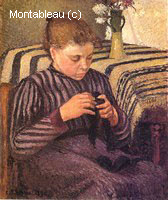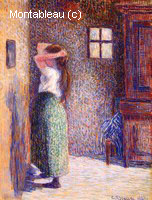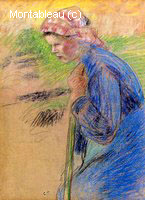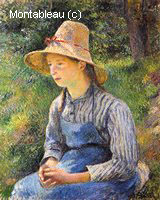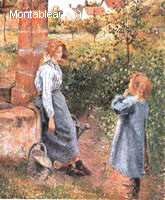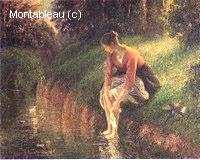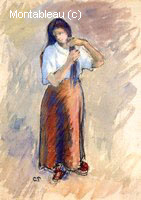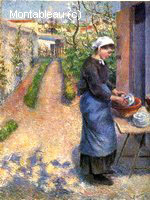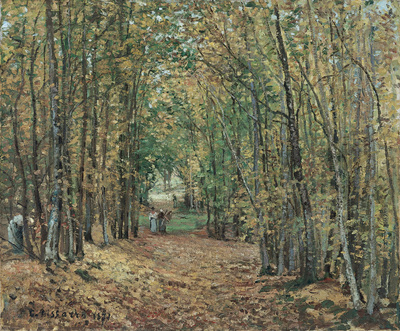
Pissarro Camille
Camille Pissarro was born in Charlotte Amalie, St. Thomas (then part of the Danish West Indies, now part of the U.S. Virgin Islands) to Abraham Gabriel Pissarro, a Sephardic Jew from France, and Rachel Manzano-Pomié, from the Dominican Republic. Pissarro lived on St. Thomas until age twelve, when he was sent to a boarding school in Paris. He returned to St. Thomas where he spent his free time drawing. In 1852, he traveled to Venezuela with the Danish artist Fritz Melbye. In 1855, he moved to Paris, where he studied with the French landscape artist Jean-Baptiste Camille Corot. Known as the "Father of Impressionism", he painted rural French life, particularly landscapes and workers in the fields as well as scenes from Montmartre. He then went to Paris to teach, where some of his students were Paul Cezanne and Paul Gauguin. In March 1893, famous Paris Gallery Durand-Ruel organised a major exhibition of 46 of Pissarro's works along 55 others by Antonio de La Gandara. But while Gandara was acclaimed by the critics, their appraisal of Pissarro's art was less enthusiastic. During his lifetime, Camille Pissarro was able to sell very few of his paintings. Recent sales of some paintings by Pissarro have been in the $4 million dollar range. He died in Éragny-sur-Epte on either November 12 or November 13, 1903 and was buried in Père Lachaise Cemetery in Paris. Article couvert par la Licence de documentation libre GNU. Article disponible sur Wikipedia
See more
